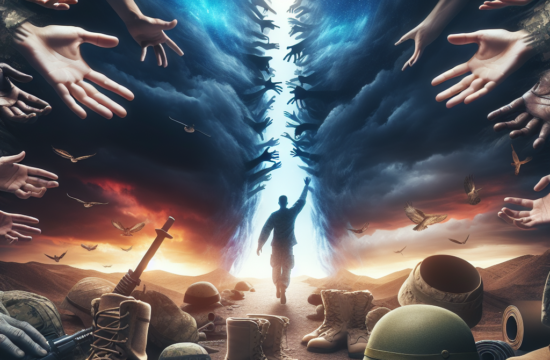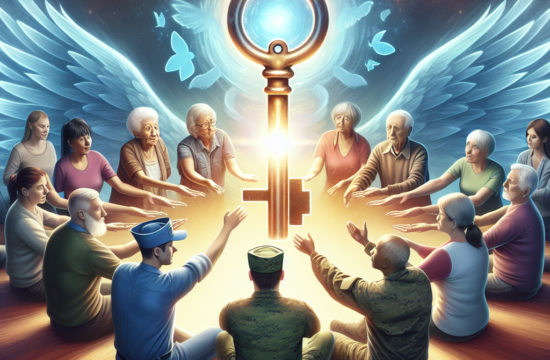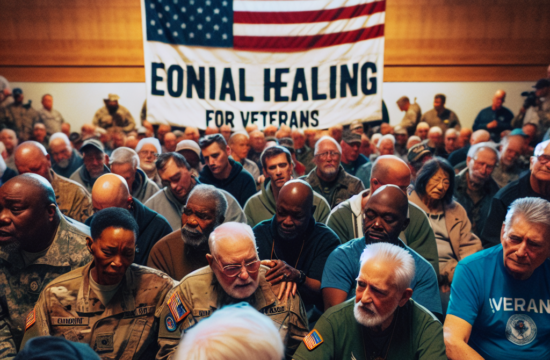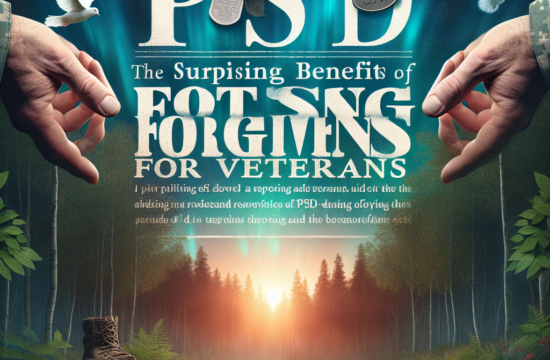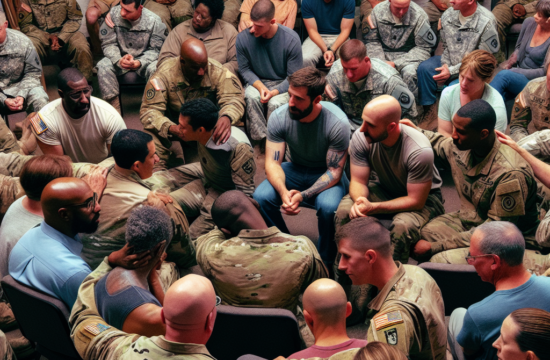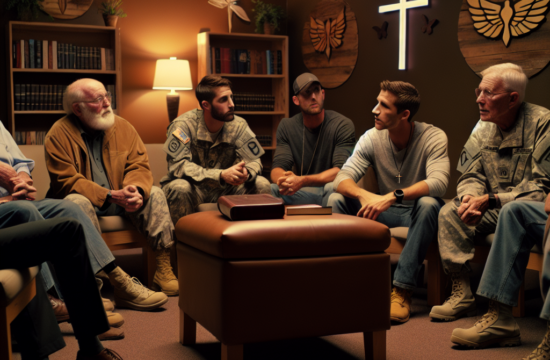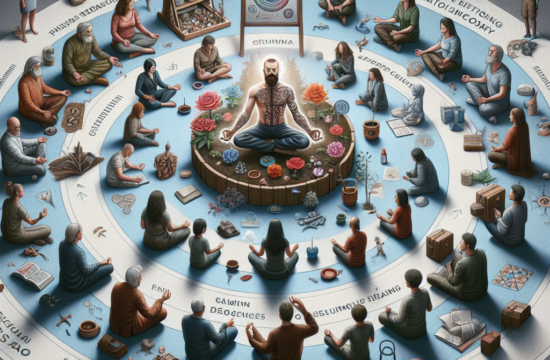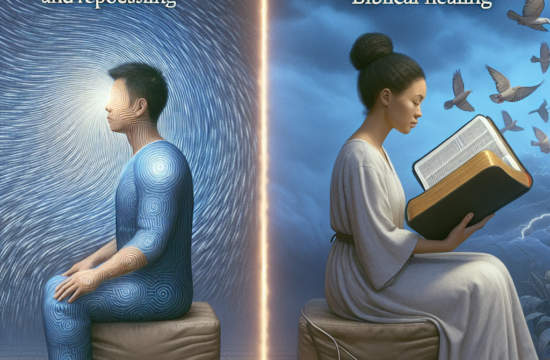==> Thank you for reading this post! Click Here If you are looking for support and Victory over PTSD.
Understanding PTSD in Veterans
What Is PTSD?
As someone who has spent many afternoons talking with veterans, I’ve come to understand that PTSD, or Post-Traumatic Stress Disorder, is more than just a buzzword. It’s a lingering shadow that follows many of our brave service members even after they return home. The memories of traumatic experiences during service can manifest in various ways, making daily life feel heavy.
Many veterans describe this feeling as a constant battle, where they are often haunted by both vivid memories and overwhelming emotions. It was eye-opening for me to see how these experiences could cause anxiety, anger, and even self-isolation, leading to difficulty in connecting with friends and family.
Through my conversations, I learned that understanding PTSD is the key first step toward healing. We can’t treat what we don’t understand, right? It’s essential to listen to these stories and educate ourselves on the signs and symptoms, so we can be supportive allies.
How It Affects Daily Life
Life with PTSD can transform a veteran’s everyday experience into a minefield of stressors. Simple activities, such as going to the supermarket or meeting friends, can become overwhelming. I remember chatting with a buddy who shared that even the sound of a shopping cart suddenly reminded him of explosions, plunging him back into dark places.
Sleep is often elusive for many veterans. The nightmares can steal precious rest and exacerbate feelings of fear and helplessness. I’ve seen how exhaustion compounds their struggles, creating a vicious cycle that’s hard to break.
Relationships can also suffer significantly. I learned from firsthand accounts how often veterans feel misunderstood by those who haven’t shared their experiences. This can lead to loneliness and frustration, making it feel near impossible to open up about what they’re going through.
Breaking Stigmas Around PTSD
One thing that stands out in my journey of understanding veterans and PTSD is the stigma attached to it. Too often, these brave individuals feel they need to hide their struggles for fear of judgment. I’ve seen this firsthand when veterans hesitate to share their stories, thinking they’ll be seen as weak.
But here’s the thing—saying you need help is not a sign of weakness; it’s an act of immense courage. It took a while for me to wrap my head around this, but when a veteran shares their story, it’s like they’re fighting a battle not just for themselves but for others too.
We need communities that support storytelling and create safe spaces for these discussions. I believe that as we talk more openly, we can chip away at those stigmas and help veterans find the connection and understanding they desperately need.
Building a Support Network
The Importance of Connection
Throughout my experiences, I’ve come to realize that connection is crucial for veterans facing PTSD. Building a support network can make a monumental difference in their healing process. I often talk to veterans about the value of camaraderie, whether that’s through old military friends or engaging in community programs.
Finding others who understand that journey—people who ‘get’ what they’ve been through—creates bonds that can be incredibly therapeutic. I once saw a group of veterans sharing their stories at a local coffee shop. The understanding among them was palpable. They laughed, cried, and leaned on one another, which highlighted the power of connection.
In my opinion, support networks can also extend to families. Educating loved ones about PTSD can ease tensions and foster patience, leading to healthier relationships. It’s like the old saying goes: “It takes a village,” and I genuinely believe this applies to veterans and their recovery.
Resources Available
When it comes down to it, many veterans don’t realize the wealth of resources available to them. I’ve spent hours sifting through organizations, support groups, and hotlines that are designed to assist veterans in navigating PTSD. Just learning about these resources can feel like a lifeline for someone in distress.
Group therapy programs have proven to be particularly effective. Sharing struggles in a safe environment creates mutual support that’s so healing. I’ve also seen how organizations focused on mental health provide free counseling services—proof that help is indeed out there.
Encouraging veterans to reach out can be tough, but I believe that knowledge is power. The more they know about available resources, the more empowered they feel to take steps toward recovery.
Engaging with Communities
Through my journey, I’ve realized how important it is for veterans to feel engaged within their communities. Whether it’s volunteering, participating in local events, or joining clubs, these activities can foster a sense of belonging. I once attended a barbecue hosted by a veterans’ organization, and the camaraderie was heartwarming.
Engaging with others not only helps distract from PTSD symptoms but also encourages the development of new friendships, which can be incredibly uplifting. When veterans get involved, they can find passion and purpose, which often is a missing piece in their recovery.
Get Support and Help with Recovery! Visit us for more Information and Support
Moreover, involving veterans in community initiatives not only benefits them but enriches the community as a whole. It fosters understanding and respect, tearing down barriers that often exist between civilians and veterans.
Using Faith as a Shield
The Role of Spirituality
From my personal perspective, tapping into spirituality can offer veterans a sturdy shield against PTSD. Many find solace in their faith, and I’ve had numerous discussions with veterans who shared how prayer and meditation grounded them during their toughest times.
Spiritual practices create routines and provide a safe place to reflect and heal. I remember talking to a veteran who found peace in nature walks while practicing mindfulness. It seemed to offer him clarity and relief from the chaos within.
I often encourage veterans to explore their spiritual side because it can be such an empowering tool for healing. Whether it’s through traditional religious practices or more personal spiritual connections, finding meaning can be key in the recovery journey.
Scriptural Insights
For many, scripture can be a powerful guide and source of hope. I’ve engaged in conversations where verses that emphasize strength and resilience appeared to uplift spirits and install hope. Many veterans find comfort in passages that speak to God’s love and support during suffering.
Creating a habit of daily scripture reading can help veterans focus on hope rather than despair. I’ve seen firsthand how these readings can shift mindsets, allowing for moments of peace and clarity. It’s like a breath of fresh air in a suffocating world.
Moreover, joining bible study groups can offer both community and accountability, which is important in the healing process. When we surround ourselves with uplifting narratives, it can transform our inner dialogue and lead to profound healing.
Prayer as a Healing Tool
Prayer can be a comforting and healing action for veterans dealing with PTSD. In my discussions, I’ve come to understand how putting thoughts into prayer can offer release and clarity. I spoke to someone who often writes prayers down, which helps process complex emotions.
Creating a personal dialogue with a higher power, even in moments of silence, can be quite powerful. It gives veterans a way to express fears and hopes without judgment. I try to remind those I encounter that prayer doesn’t need to be elaborate—it’s about being true to one’s feelings.
Ultimately, it’s about finding tools that resonate on a personal level. Combining faith and personal experience can create a solid framework for healing, serving as a shield against PTSD’s heavy weight.
Conclusion
In my journey to understand and support veterans facing PTSD, I’ve learned that we can create a nurturing environment that fosters healing. By building bridges of understanding, strengthening support networks, and engaging in communities, we can pave the way for a brighter path forward. Together, we can protect our heroes and give them the strength they need to reclaim their lives.
FAQs
1. What is PTSD and how does it affect veterans?
PTSD is a mental health condition triggered by experiencing or witnessing traumatic events. For veterans, it can manifest as anxiety, nightmares, and a strong emotional response to reminders of their trauma. It’s a complex condition that affects various aspects of everyday life.
2. How can family members support veterans with PTSD?
Family members can support veterans by educating themselves about PTSD, listening without judgment, and encouraging open communication. Being patient and understanding the signs of PTSD can help create a supportive home environment.
3. What resources are available for veterans suffering from PTSD?
There are numerous resources, including therapy programs, support groups, and hotlines dedicated to veterans. Local veterans’ organizations and online communities can also provide valuable support.
4. How can spirituality aid in the recovery of PTSD?
Spirituality can offer comfort and hope for veterans as they navigate their healing journey. Engaging in spiritual practices such as prayer, meditation, or reading scripture can create a sense of purpose and belonging, which helps in coping with PTSD symptoms.
5. What role does community engagement play in healing?
Community engagement can foster social connections that reduce feelings of isolation. Volunteering and participating in local events can promote a sense of belonging and purpose, which is crucial for mental well-being and recovery.





